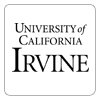The Equitable Science Curriculum for integrating Arts in Public Education (ESCAPE) addresses a profound problem: science learning deficits among the growing population of elementary students who are non-native English speakers. Focusing on six high-need Southern California school districts, ESCAPE targets grade 3-5 English Language Learners (ELLs) in developing the academic language needed to understand scientific concepts. To address learning challenges posed by difficult scientific vocabulary, the project integrates the arts' more concrete strategies to illustrate the sciences' more abstract concepts, exploiting similarities between these disciplines' shared basis in crosscutting concepts like pattern, cause/effect, scale, proportion, and quantity. The grade 3-5 focus is crucial because comprehension at this level is pivotal to future achievement. Led by University of California-Irvine STEM faculty (with support from UCI's CalTeach preservice science teacher development program), the partnership includes teachers and administrators from the Orange County Department of Education and six school districts, WestEd educational consultants, and the Segerstrom Center for the Arts. ESCAPE expects to increase: 1) teacher content and pedagogical knowledge in Earth, Physical, and Life Science; 2) integration of arts to boost ELL learning; and 3) student achievement on science and language development tests.
Over four years, each of 150 teachers receives 220 hours of team-based professional development in using science kits and illustrating science concepts through the arts. Program effectiveness is measured using a random assignment design. Principals in each of the six districts volunteer their schools for the project; within each district schools are randomly assigned to treatment or control conditions. Program effects on students' and teachers' science knowledge and achievement are measured by pre- and post-tests for students and teachers. The goal of the research is to measure the effect of the intervention on teachers' science content and pedagogical knowledge, as well as the effect on student science achievement. Causal mechanisms are investigated, including how school and teacher characteristics modify the effects as well as differential effects on ELLs and native English speakers, and the mechanisms underlying these differential effects. The quantitative analyses is based on multilevel regression models, with students nested in classrooms (teachers) that are nested in schools, and accounting for a host of control variables. These methods provide unbiased estimates of program effects. Qualitative data include teacher implementation logs, feedback forms, and focus groups.
ESCAPE aims to provide sustainable teacher professional development that increases teachers' science content and pedagogical knowledge, while overcoming impediments to ELLs' STEM learning. Over the project's five years, 150 teachers will teach ~21,000 students, and ~180 CalTeach preservice teachers will be trained. Among the project's products is an ELL-accessible curriculum for Earth, Physical, and Life Science in grades 3-5 and a video-based online system for training teachers (providing a university Certificate in Teaching Science through the Arts), which will be deployed and tested with CalTeach pre-service teachers and teachers in Southern California school districts. This will assist in the national dissemination of this model for improving teacher and student achievement.








